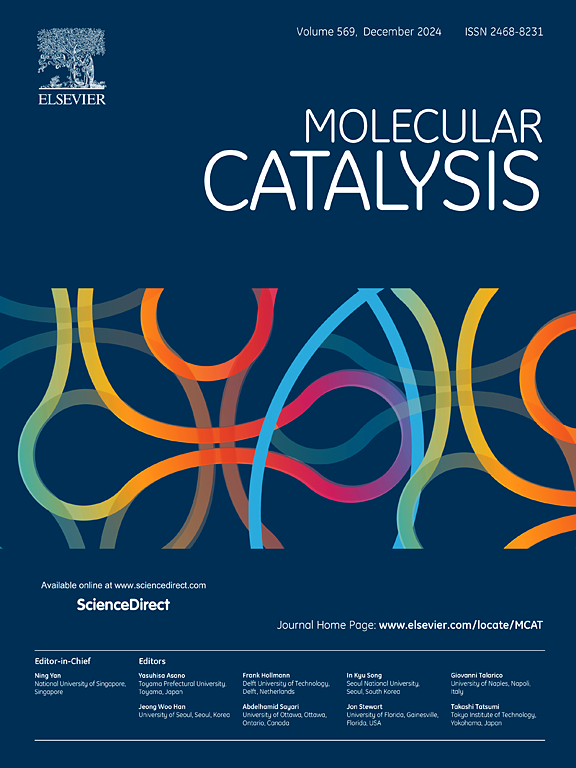Spray drying synthesis of stable Cu catalyst supported on carbon with high C2 product selectivity in CO2 electrolysis
IF 3.9
2区 化学
Q2 CHEMISTRY, PHYSICAL
引用次数: 0
Abstract
Electrocatalytic carbon dioxide (CO2) reduction is an appealing option that offers advantages of converting greenhouse gas CO2 into value-added hydrocarbon products while storing green energy. Copper (Cu) is a unique catalyst that has adequate ability for adsorption and activation of CO2, as well as important intermediate species for forming multi-carbon (C2+) products. In particular, monovalent Cu(I) is deemed to be responsible for C-C coupling to form C2+ products. However, oxidation state copper species are unstable under the CO2 electrolysis conditions, tending to be reduced along with surface reconstruction. It is therefore important to develop a robust catalyst synthesis method to enhance the stability of Cu-based catalysts. Here, we demonstrate a spray-drying method for the synthesis of carbon-supported Cu catalysts for the electrocatalytic CO2 reduction reaction. This method is scalable and cost-effective, allowing one to realize mass production of carbon-supported Cu catalysts. A catalyst sample thus synthesized exhibits a Faraday efficiency of C2 products (e.g., ethylene, ethanol and acetic acid) as high as 85.8 %. In-situ attenuated total reflection-surface-enhanced infrared absorption spectroscopy and surface-enhanced Raman spectroscopy characterization results reveal that the porous carbon support stabilizes Cu2O/CuO nanoparticles, facilitate CO2 adsorption, enrich local important intermediates for the C-C coupling reaction.

喷雾干燥法制备碳负载Cu催化剂的研究
电催化二氧化碳(CO2)还原是一种很有吸引力的选择,它在将温室气体二氧化碳转化为增值碳氢化合物产品的同时,还能储存绿色能源。铜(Cu)是一种独特的催化剂,对CO2具有足够的吸附和活化能力,是形成多碳(C2+)产物的重要中间物质。特别是,单价Cu(I)被认为是C-C耦合形成C2+产物的原因。然而,在CO2电解条件下,铜的氧化态是不稳定的,随着表面重构,铜的氧化态趋于减少。因此,开发一种稳健的催化剂合成方法来提高铜基催化剂的稳定性是十分重要的。在这里,我们展示了一种喷雾干燥的方法来合成碳负载的Cu催化剂用于电催化CO2还原反应。该方法具有可扩展性和成本效益,可以实现碳负载Cu催化剂的大规模生产。由此合成的催化剂样品显示C2产物(如乙烯、乙醇和乙酸)的法拉第效率高达85.8% %。原位衰减全反射-表面增强红外吸收光谱和表面增强拉曼光谱表征结果表明,多孔碳载体稳定了Cu2O/CuO纳米颗粒,促进了CO2吸附,丰富了C-C偶联反应的局部重要中间体。
本文章由计算机程序翻译,如有差异,请以英文原文为准。
求助全文
约1分钟内获得全文
求助全文
来源期刊

Molecular Catalysis
Chemical Engineering-Process Chemistry and Technology
CiteScore
6.90
自引率
10.90%
发文量
700
审稿时长
40 days
期刊介绍:
Molecular Catalysis publishes full papers that are original, rigorous, and scholarly contributions examining the molecular and atomic aspects of catalytic activation and reaction mechanisms. The fields covered are:
Heterogeneous catalysis including immobilized molecular catalysts
Homogeneous catalysis including organocatalysis, organometallic catalysis and biocatalysis
Photo- and electrochemistry
Theoretical aspects of catalysis analyzed by computational methods
 求助内容:
求助内容: 应助结果提醒方式:
应助结果提醒方式:


